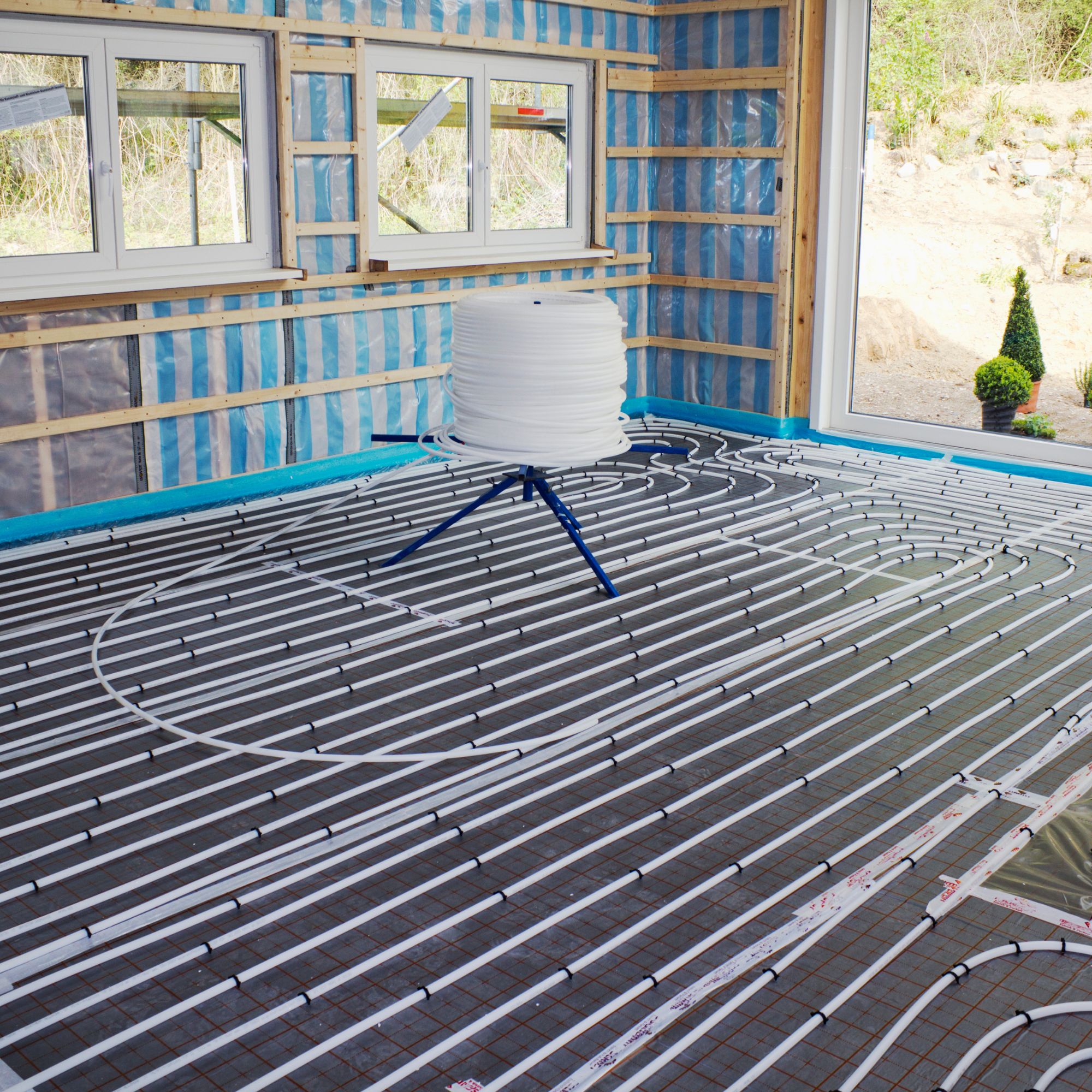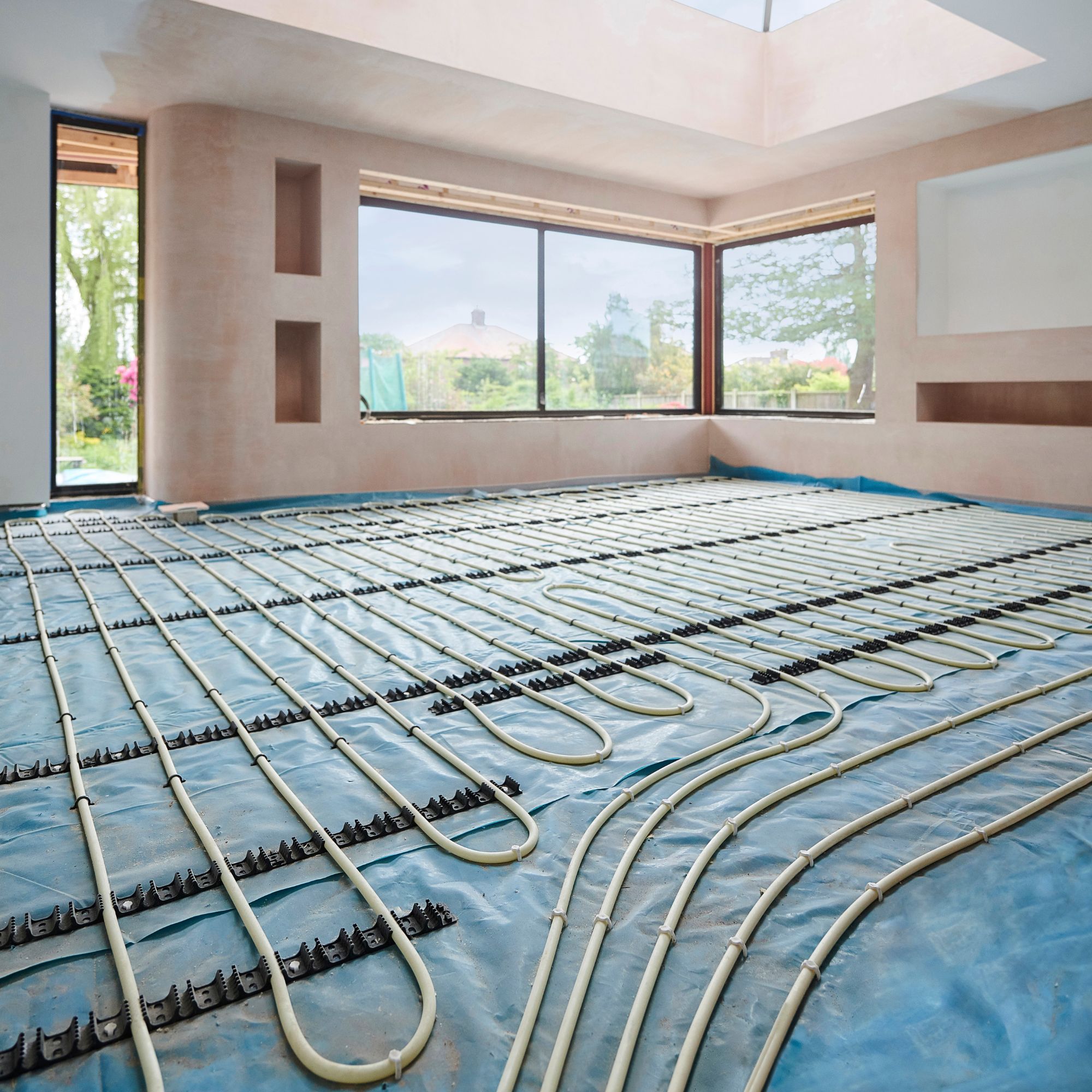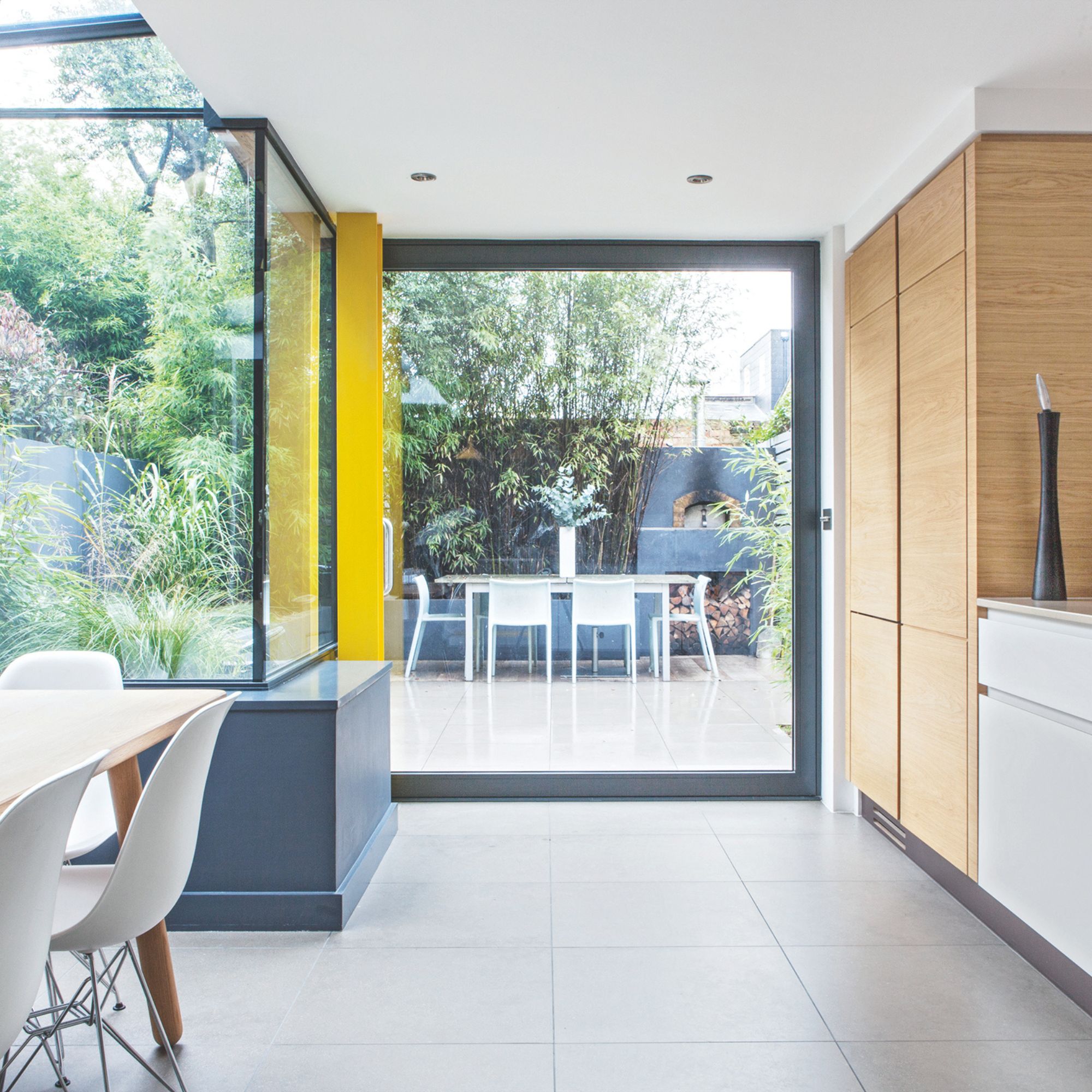
Underfloor heating is a popular option for homeowners wanting to maintain a comfortable environment in their homes throughout the winter. But it may not be the right option for every home.
Before you get in to the pros and cons of underfloor heating, it's important you understand how it works, the type of systems you can get, and how it's installed to determine if it will suit your home, or whether you will be better off choosing an alternative heat emitter.
To help, I've spoken to the underfloor heating pros who have shared their expert knowledge on everything you need to know before you take the plunge.
How does underfloor heating work?

There are different types of underfloor heating but, in essence, each system comprises a network of heated pipes or cables laid directly beneath your flooring, which transforms the entire surface into a radiant heat emitter.
Benefits include lower energy bills (as pipes don't need to be heated to anywhere near the temperature of radiators to provide warmth), no need for radiators, which frees up wall space and gives you loads of flexibility when it comes to room layouts and furniture placement.
On the downside, underfloor heating can be more complicated, and therefore expensive, to install than a radiator, and if not installed properly, can lead to cold spots and leaks that are potentially disruptive to resolve.
‘Underfloor heating (UFH) systems were once seen as a luxury reserved for high-end kitchens and bathrooms, but that’s no longer the case,’ says Ben Perris, Head of Sales for Indoor Climate Solutions at Wavin. ‘With updated Building Regulations and the UK’s drive towards low-carbon heating, UFH is quickly becoming a practical, energy-efficient choice for everyday homes.’
What types of underfloor heating can you get?

There are two types of underfloor heating that you can choose from:
- Wet underfloor heating. In a system like this, warm water (heated by your boiler, or renewable tech like a heat pump), flows through the pipes to heat the room.
- Dry (or electric) underfloor heating. Instead of warm water, the pipework in a dry system is heated by electricity. These can be in the form of electric cables or pre-threaded mats.
Whether wet or electric underfloor heating is better for your home will depend on where you want to install it. 'Wet systems are more cost-efficient to run, as a KW of gas to heat a gas boiler is far cheaper than a KW of electricity,' says Lincoln Smith, Managing Director at Custom Heat. 'But this benefit is offset by the fact that a wet system is typically more costly to install.
'A wet system could be vulnerable to a leak, although it's uncommon. Both a wet and dry system could be vulnerable to a rupture where furniture (such as a bathtub) is fixed to the floor. Repairing a damaged cable or pipe hidden under the floor will inevitably be problematic with either design.'
When it comes to wet underfloor heating, installation is easiest in new builds, but it is possible to retrofit it in an existing property. Low profile systems will limit the impact this has on your floor heights.
Dry systems can be much quicker to install and heat up quickly but, as they use electricity rather than gas to heat the pipes, can be more expensive to run than wet systems. This means they are best suited to installation in small, individual rooms like bathrooms.
How is underfloor heating installed?

Installation will depend on the type of system you choose. But remember there are places you should never install underfloor heating, so make sure you factor that in before you start.
For a wet underfloor heating system:
- As a first step, speak to a professional heating engineer who can conduct heat loss calculations in the rooms where you’re planning to install UFH. With this data to hand, he or she is able to design a system using products that meet the unique requirements of the space.
- The floor/subfloor needs to be cleaned and prepped. File down any bumps and use grout to fill in cracks, establishing a smooth, even surface.
- Insulation is fitted to sit beneath the heating system itself, so warmth is not lost downwards. Make sure this layer is level and free from gaps.
- The manifold is connected to your existing water supply via the pump and mixing valve. Make sure it is positioned in a place where it is easily accessible for future maintenance.
- The pipework for your underfloor heating is laid out at neat, even intervals in a snake-like pattern across the surface of the floor. The pipework is then connected to the manifold so it can be flushed, filled and pressurised to clear any debris from the pipes.
- Screed is laid over the top to help spread heat across the whole surface of your floor. This layer will either be made of a sand and cement mix or it’ll be a self-levelling liquid compound. Once this layer has been laid, it needs time to dry out thoroughly. Don’t be tempted to turn on the heating system to speed up the drying process, as this may lead to cracking.
- Once the screed has cured properly, your choice of floor covering can be laid down.
For electric underfloor heating, the installation is a lot simpler. Once you've prepared the subfloor and added the insulation, you can add your cables or underfloor heating mats. Remember, you will need an electrician to connect it to your home's mains instead of your water supply. If your dry system comes in mat form, then you won't need to worry about snaking the cables around the room as they will already be evenly spaced in the mat fabric.
For whatever type of system you decide on, you need to make sure you choose a floorcovering that is compatible with underfloor heating, and follow the manufacturer's instructions for how to bring your system up to temperature. This may involve slowly increasing the temperature over a number of days.
Where can you put underfloor heating?

While you could technically put underfloor heating anywhere you like, it's worth being aware of the circumstances where it's easier to install and where you'll get the most benefit, plus the places or factors that will effect the systems efficacy or efficiency.
'Wet and electric underfloor heating can be installed in any room in the home, thanks to the various innovative systems that have been developed over the years,' explains heating expert Matthew Jenkins at MyJobQuote.co.uk. 'However, there are some considerations before committing to underfloor heating, including the level of insulation in the room and floor height.'
- Whether you are adding it from scratch or retrofitting. It's easier to install wet underfloor heating in new builds, but that's not to say it's impossible to install it in an existing home. But you will need to be cautious of how this will affect floor heights. Low profile systems are available if you are worried.
- How well-insulated your home is. 'Modern homes and new builds will have good insulation levels but older homes may not,' says Matthew. 'The heat output of underfloor systems is lower than conventional radiators, so the impact of poor insulation will be felt more readily with underfloor heating as the heat loss may outweigh the heat produced by the system. Therefore, it’s important to address the level of insulation before installing underfloor heating.'
- Small vs large space. Electric underfloor heating is very unlikely to be cost-effective in a large, open-plan room. However, if you want only want underfloor heating in a small room, such as a bathroom, then an electric system, which will be cheaper to install and will heat up quicker, would be a better option.
- What kind of furniture you have. It's best not to install underfloor heating beneath fitted furniture, like wardrobes or kitchen cabinets. It'll block the heat from where you need it and potentially cause your system to overheat.
How much does underfloor heating cost?

When it comes to how much underfloor heating costs, it can vary depending on the size of your home, the circumstance of the installation, and the type of system you install.
According to Checkatrade, electric underfloor heating is the cheapest to install with average costs of £50-75 per m2 when installed in a new build, rising to £60-85 per m2 when retrofitting to an existing property.
Wet underfloor heating is a more complex install, which is why it costs more. Expect to pay around £85-100 per m2 to fit it in a new build, and £95-110 per m2 to retrofit.
You'll also need to factor in the ongoing running costs of your chosen system. This again will depend on the size of your home, where it's fitted and how long it's used for. While wet underfloor heating costs more to install, it is more cost-effective to run than electric underfloor heating. This down to the price of a unit of gas being cheaper than a unit of electricity.
How do you control underfloor heating?
Like a regular central heating setup, underfloor heating is controlled via a thermostat that allows you to manage the temperature settings and timings for each room.
Learning how to manage your heating effectively will save both energy and money, as you won’t be wasting your money on heating rooms that aren't being used. 'One of the biggest pitfalls homeowners make with underfloor heating is underestimating the importance of controls,' explains Ben from Wavin. 'Without an easy-to-use, well-planned control system, even the most efficient UFH setup can fall short.
'The key is choosing a system that makes managing your heating straightforward. Modern solutions simplify this process for both installers and homeowners. Intuitive app controls and clear zoning options allow homeowners to adjust temperatures room by room, schedule heating times, and even control the system remotely – making it easy to enjoy all the benefits of underfloor heating without the complexity.'
When it comes to the temperature your underfloor heating should be set at, typically, living areas are set to a temperature of around 21°C while bedrooms are slightly cooler, at around 18°C.
What kind of maintenance does underfloor heating need?
You'll need to get your underfloor heating serviced every year by a professional to ensure it keeps working in tip top condition. This can help identify any potential issues early on, before they become too disruptive to fix.
It's also a good idea to put your underfloor heating on a few times over the course of the summer too.
If you want to keep the maintenance to a minimum, make sure you choose a reputable installer who uses quality parts.
FAQs
How long should underfloor heating last?
With correct installation, use and maintenance, underfloor heating can last for decades. Electric systems have a slightly shorter shelf-life, tending to last between 20 and 30 years, while wet systems can last for in excess of 35 years (although the pipework itself could last for much longer, in some cases in excess of 50 years).
However, parts of the system, like a underfloor heating manifold, thermostat or controls may need replacing sooner. But regular maintenance will ensure they last for as long as possible.
Still not convinced it's the right choice? Take a look at our comparison of underfloor heating versus radiators to select the right option for your home.







